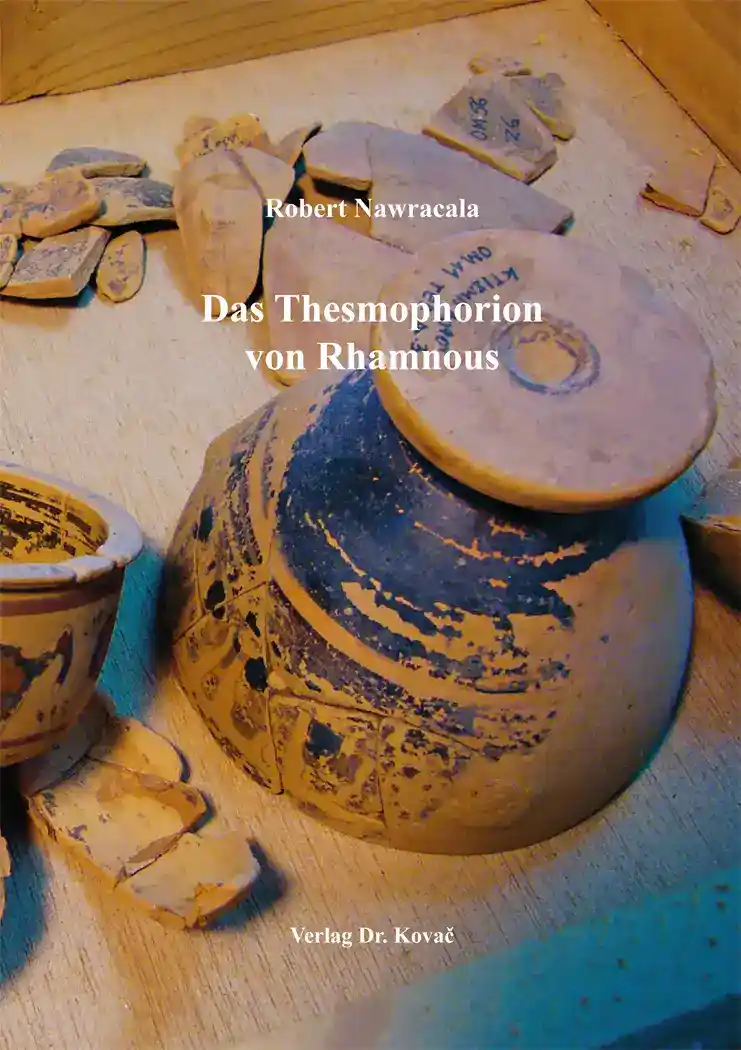Robert NawracalaDas Thesmophorion von Rhamnous
ANTIQUITATES – Archäologische Forschungsergebnisse, volume 62
Hamburg 2014, 316 pages
ISBN 978-3-8300-7890-6 (print)
ISBN 978-3-339-07890-2 (eBook)
Rezension
[…] N. hat mit seiner sorgfältigen Untersuchung über das Thesmophorion von Rhamnous der Wissenschaft einen bemerkenswerten Fundkomplex eröffnet und damit einen wichtigen Beitrag für das Verständnis der Demeterheiligtümer in Attika geleistet. […]
About this book deutschenglish
Only recently the focus of archaeological science shifted towards questions concerning the simple constructed rural sanctuaries. Even though their architecture is quite simple and their pottery is often undecorated, the conclusions that can be drawn from studying their material allows a better understanding of everyday life and ritual activities in ancient times. Such a rural area was excavated by the Greek Archaeological Society of Athens between 1988 and 1993 to the west of the road between the famous temple of Nemesis and the fortified settlement of Ramnous on the gentle hill now overgrown with macchia. This book analizes the large ammount of excavated material which can be associated with two separate architectural compounds. One is a ordinary rural farmstead, the other one a walled sanctuary under open skies. The sanctuary can be identified as a place of worship for the goddess of fertility, Demeter. Her special cultic feast was celebrated in autumn to pray for women’s and agricultural fertility. These festivaldays were called “thesmophorien”, a term that was also later used for specific cult places of Demeter. During the three days man were strictly prohibited to enter the area of the goddess, to observe or even to take part in the secret and sometimes nocturnal activities. The Thesmophorion of Ramnous with its typical findings fits in the chronological development already gained from other known Thesmophoria. It stands between the early ones like Bitalemi near Gela on Sicily and Eretria on Euboia and the later hellenistic ones like Pella in Northern Greece. The farmstead lying next to the Thesmophorion is characterised by visible measures of rebuilding and alteration which can be attributed to a destruction in the early 5th century B.C. This can be easly explained by the devastation and extinction of rural settlements in Attica during the Persian campaign of 479 B.C. The development of the city of Ramnous with its different heydays, but also the changes in ritual practice and habits are clearly visible in the archaeological material of both areas.Keywords
AltertumDemeterImkereiKlassische ArchäologieKoreKultfestKultplatzländlichSkyphosThesmophorionTurmgehöftWohnarchitekturYour book at Dr. Kovač Publishing House
We publish your doctoral thesis >>
